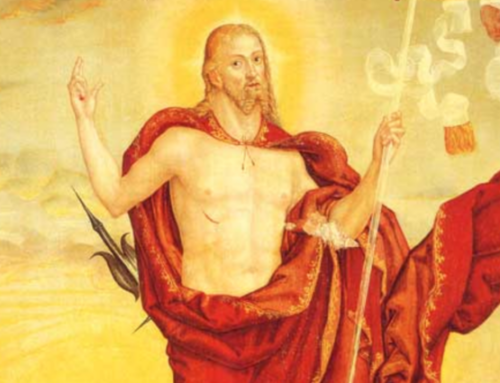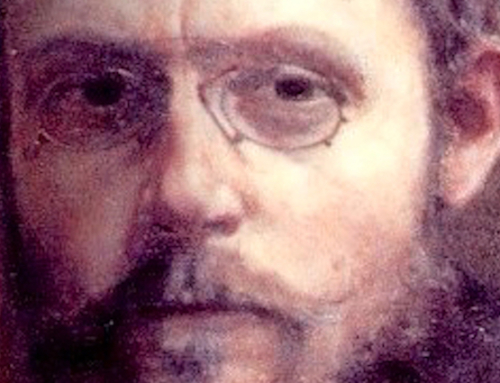The week after the terrorist attacks of September 11, 2001, President George W. Bush addressed a joint session of Congress.
He gave in many respects an eloquent and well-crafted speech. It set down with considerable skill the meaning of the attacks and reasons to launch the war on terrorism. Nonetheless, the President made few references to America’s national experience that might have supplied images and metaphors to help Americans draw instructive analogies to contemporary events and give concrete meaning to his apologia for freedom.
I want to explore the importance of rhetoric in keeping alive a nation’s collective memory. For a society to have a sense of its purpose in history, rhetoric is necessary. Great political rhetoric moves the individual and the nation by evoking an ideal or supreme image of who they are as a people and how they fit into the greater scheme of things, how they relate to God or destiny. But to make such an image palpable, the rhetorician must attend to the chain of lesser images that rises to that supreme image.
Sensationalist Freedom
It was most appropriate for the president to put freedom at the center of his speech. But it was also necessary for him to set out significant benchmarks in the history of that freedom, benchmarks that define and vindicate it. Abraham Lincoln employed this method almost perfectly in the Gettysburg Address. There Lincoln set forth the Union as his central governing image and led his listeners, through a tight chain of allusions to the origin and history of the United States, to a fuller sense of its meaning and the war being fought for it.
Freedom is not “just another word for nothin’ left to lose,” as Janice Joplin famously sang. Nor is freedom the liberty of the individual to do whatever pleases him so long as no one gets hurt, as so many of my college students honestly believe. But many, many Americans embrace this highly privatized and hedonistic notion of freedom.
The president did not have this sort of freedom in mind. Real political freedom is the felicitous condition under which justice may be purposively pursued. This political freedom has a narrative. It belongs to a history that needs to be told in order to inspire and ennoble those who possess it and are called to protect it. Great statesmen paint the past with the silver patina of myth, memory, and the moral imagination in order to elevate the minds of the people and move the national community to united action. But the president did not rehearse that narrative or tell that history.
He did not take his listeners back to the founding and lead them through a chain of images of freedom embattled and freedom vindicated that would focus the mind’s eye on the present moment of challenge.
The president was not the only one to miss this opportunity; the media did far worse. It did not seem to have occurred to any of the major television networks, for example, to lead their viewers through a reflection on the nation’s extensive history of international engagement in order to help them make discerning judgments about the so-called war on terrorism. The media instead embraced sensationalism at almost every turn. They pandered to the passion for immediacy that so characterizes the modern temperament.
Those who are in special positions of influence within a society, whether they are parents or politicians, clergy, teachers, or the press, are obligated to exercise that society’s collective memory to ensure that its tradition of freedom is handed on and renewed. Yet as a college professor I can say confidently and with great sadness that the young men and women in my classrooms are the most historically illiterate and politically uninformed that I have seen in more than twenty-five years of teaching. The fault does not rest solely on their teachers. It rests at least as much on parents, pastors, and civic leaders. All have allowed the rising generation to become captive to a popular culture that is self-centered, hedonistic, dangerously utilitarian, increasingly antagonistic to memory, and impious toward the past.
America’s Soft Underbelly
This state of affairs has moved me to return of late to the work of Richard M. Weaver, an author whose writings made a strong impression on me in my formative years. The title of Weaver’s best-known work now belongs to our popular vocabulary, even if most people familiar with the term “ideas have consequences” have not read his book. Ideas Have Consequences was published in 1948, more than a half-century ago. Yet it, along with others of Weaver’s writings, speaks with startling insight to our present situation.
In the introduction, Weaver apologizes for offering the public yet “another book about the dissolution of the West.” But Ideas Have Consequences is not just another book of that kind. Although Weaver undoubtedly had some books from the genre in mind—such as Oswald Spengler’s Decline of the West and José Ortega y Gasset’s Revolt of the Masses—his is unique in its attention to imagery and language as indicators of the spiritual and moral condition of a society. Weaver in his role as a teacher of rhetoric was a profound humanist and transcendental moralist.
On September 11, the new barbarians executed a great assault on the American social body. Their attack brought out great heroism, but it also exposed America’s soft underbelly. For some time after that day the “Great Stereopticon”—Weaver’s term for television, radio, and the printed media, the machinery of mass communication—spread throughout the land its images of our changed world. Daily—nay, hourly and minute by minute, interrupting itself with crawling headlines underneath the talking heads—it served up its own strange pictures of reality, images that were as debilitating as they were ubiquitous.

The magnitude, complexity, and reach of mass communication have increased vastly since Weaver’s day, but he describes the character and nature of the Great Stereopticon with exceptional insight and foresight.
The Stereopticon, he says, projects a highly selective and often nightmarish vision of the world, one composed largely of images of psychopathology, strife, and deadly force. Its malevolent gods bear down on us relentlessly and mercilessly. These are not so much images of what is “real” as they are the symptoms of cultural degradation. Writing even before the full impact of television, Weaver observes:
The operators of the Stereopticon by their very selection of matter make horrifying assumptions about reality. For its audience that overarching dome becomes a sort of miasmic cloud, a breeder of strife and degradation and of the subhuman.
What person taking the affirmative view of life can deny that the world served up daily by the press, movies, and radio is a world of evil and negation? There is iron in our nature sufficient to withstand any fact that is presented in a context of affirmation, but we cannot remain unaffected by the continued assertion of cynicism and brutality. Yet these are what the materialists in control of publicity give us.
Society, Weaver says, is not well served by images of wickedness and human degradation that are neither interpreted through historical memory nor transfigured by religious and moral imagination into a positive belief in the greater strength of goodness. “How common is it,” he writes, “to see upon the front page of some organ destined for a hundred thousand homes the agonized face of a child run over in the street, the dying expression of a woman crushed by a subway train, tableaux of execution, scenes of intense grief. . . . The rise of sensational journalism everywhere testifies to man’s loss of points of reference, to his determination to enjoy the forbidden in the name of freedom” while avoiding judgment and losing faith in a greater benevolence.
“Man is in the world to suffer his passion,” Weaver continues. But the genuine creators and conservers of culture draw up images of man and society that resist “that ‘sinking in upon the moral being’” of raw experience and emotion that is the death of a meaningful world.
The genius and wisdom of the great poets and novelists, whether we are speaking of Dante, Dickens, and Dostoevsky, or Austen, Eliot, and Faulkner, is that, even as they expose vividly the character of evil, human suffering, and deadly untruth, they also show us how goodness, beauty, and truth shine light on a world that would otherwise slip into utter darkness.
No matter its boasts or pretensions, a civilization that is stripped of memory and the moral imagination is in jeopardy of collapsing in upon itself, its public world imploding into fragments of private desire and gratuitous brutality. The so-called realistic images that the Great Stereopticon projects onto the screen of the common life do not fortify belief. They may evoke pity for the other and pity for oneself, but they are incapable of leading us to a clear understanding of justice. They may stir the passions, but they do not strengthen the virtues.
If you ignore thinkers on the right, you won’t understand how certain core ideas like individual liberty and free enterprise shaped America. And you won’t fully grasp the heated debates that dominate our culture today.
Republished with gracious permission from the Intercollegiate Review (July 2018).
The Imaginative Conservative applies the principle of appreciation to the discussion of culture and politics—we approach dialogue with magnanimity rather than with mere civility. Will you help us remain a refreshing oasis in the increasingly contentious arena of modern discourse? Please consider donating now.
Editor’s Note: Images by Anthony Garand and Sven Scheuermeier via Unsplash.







Leave A Comment